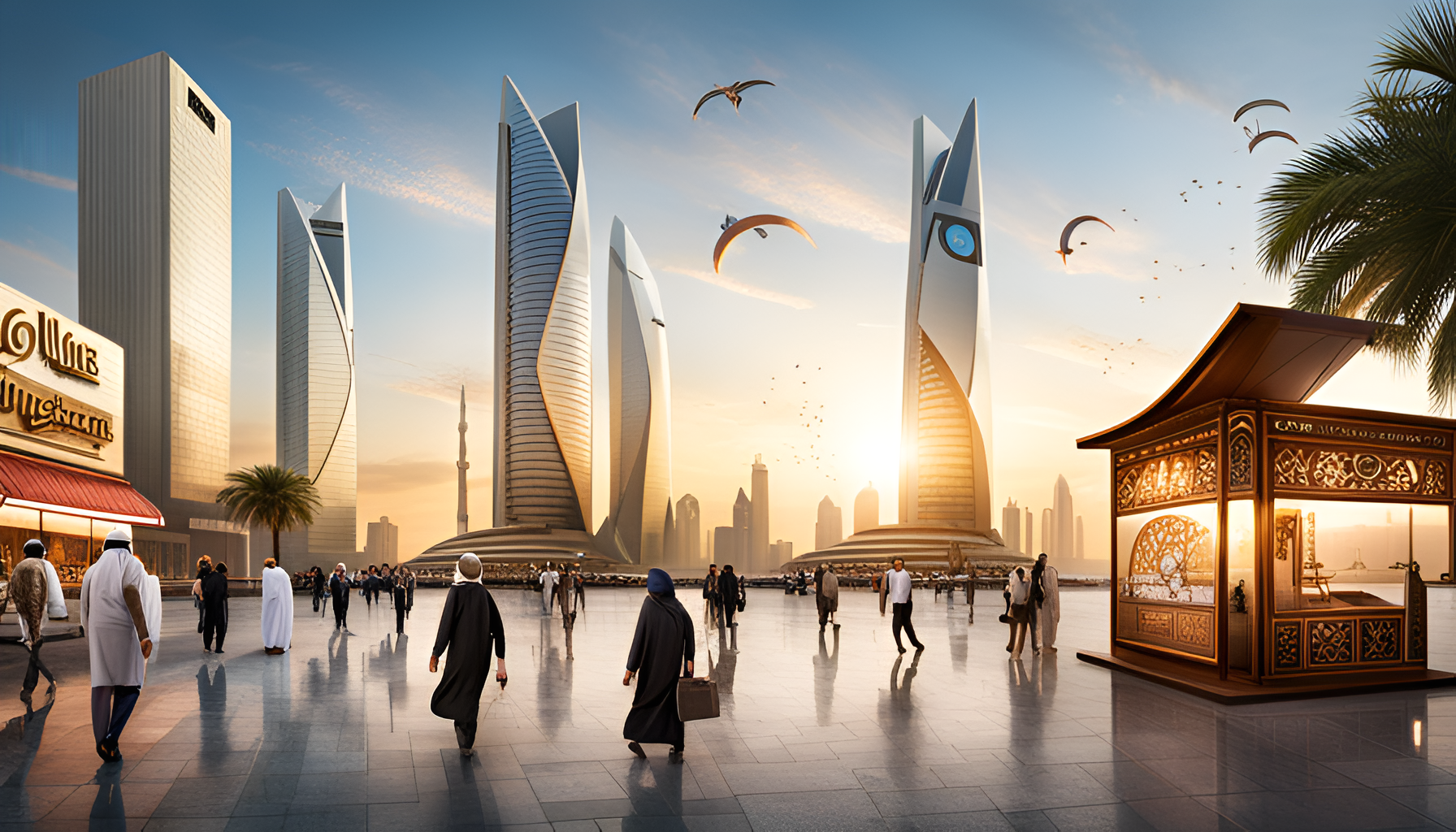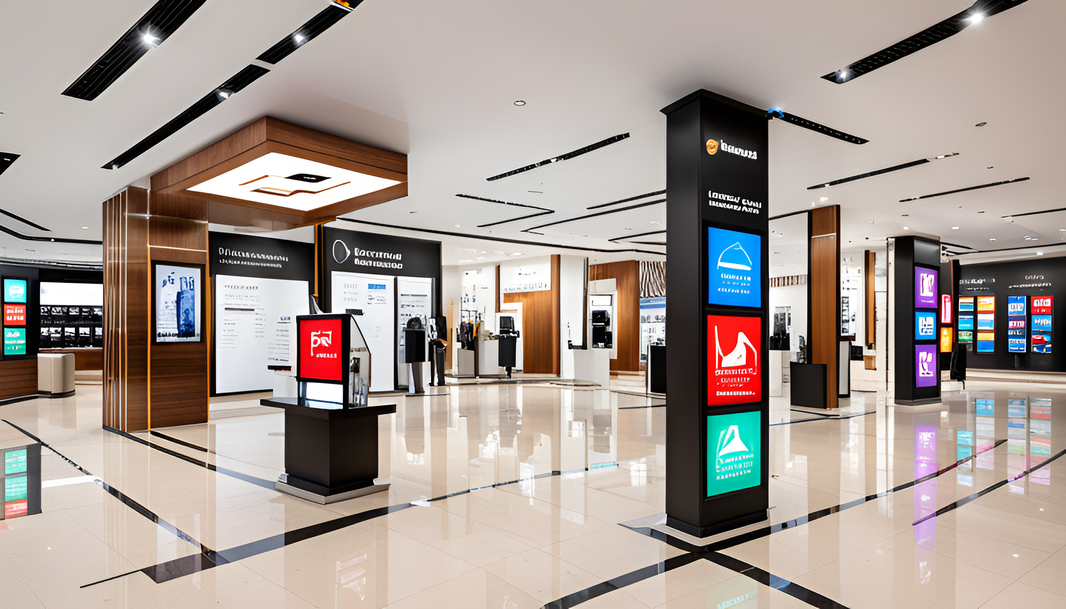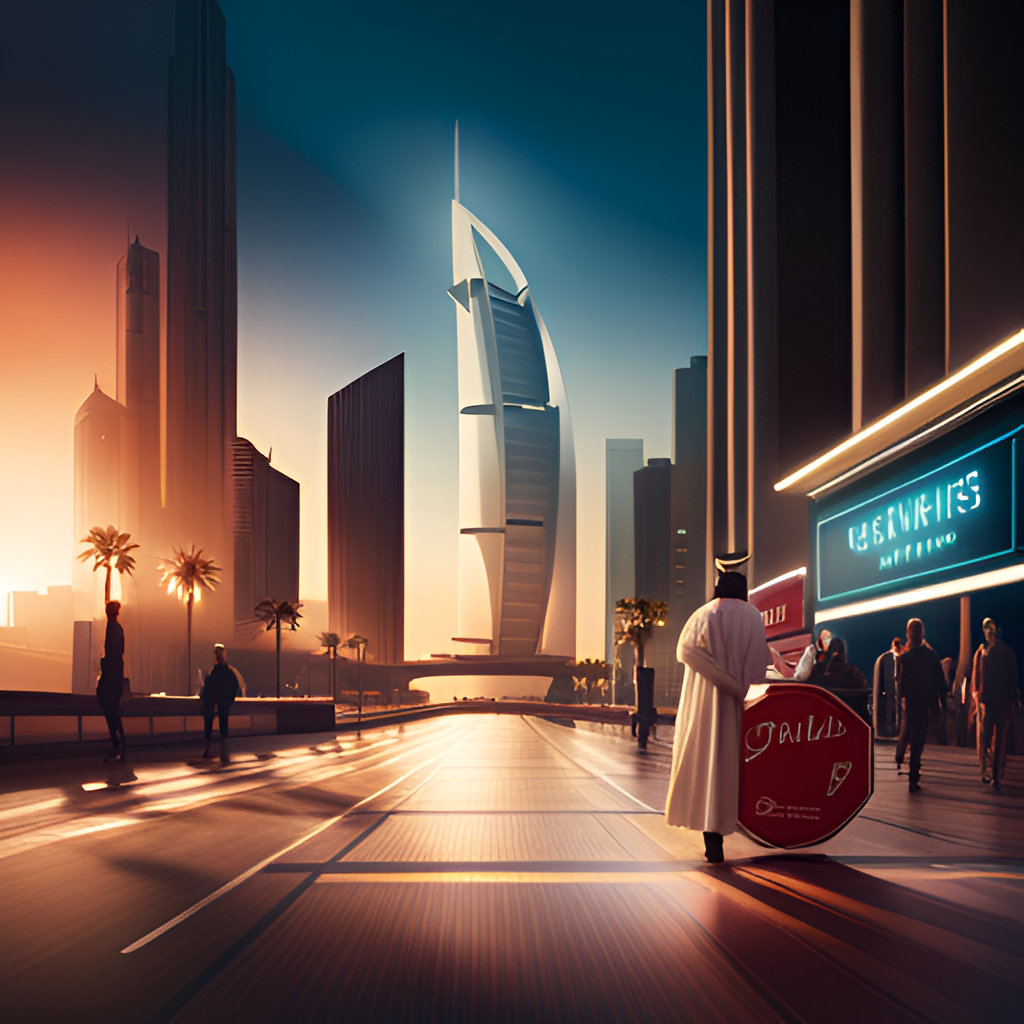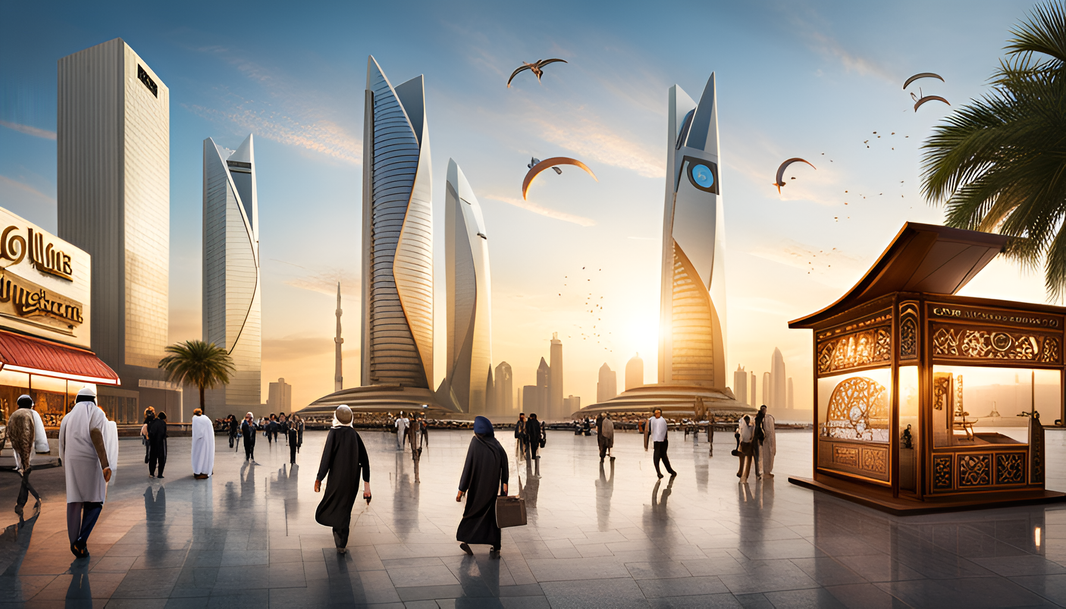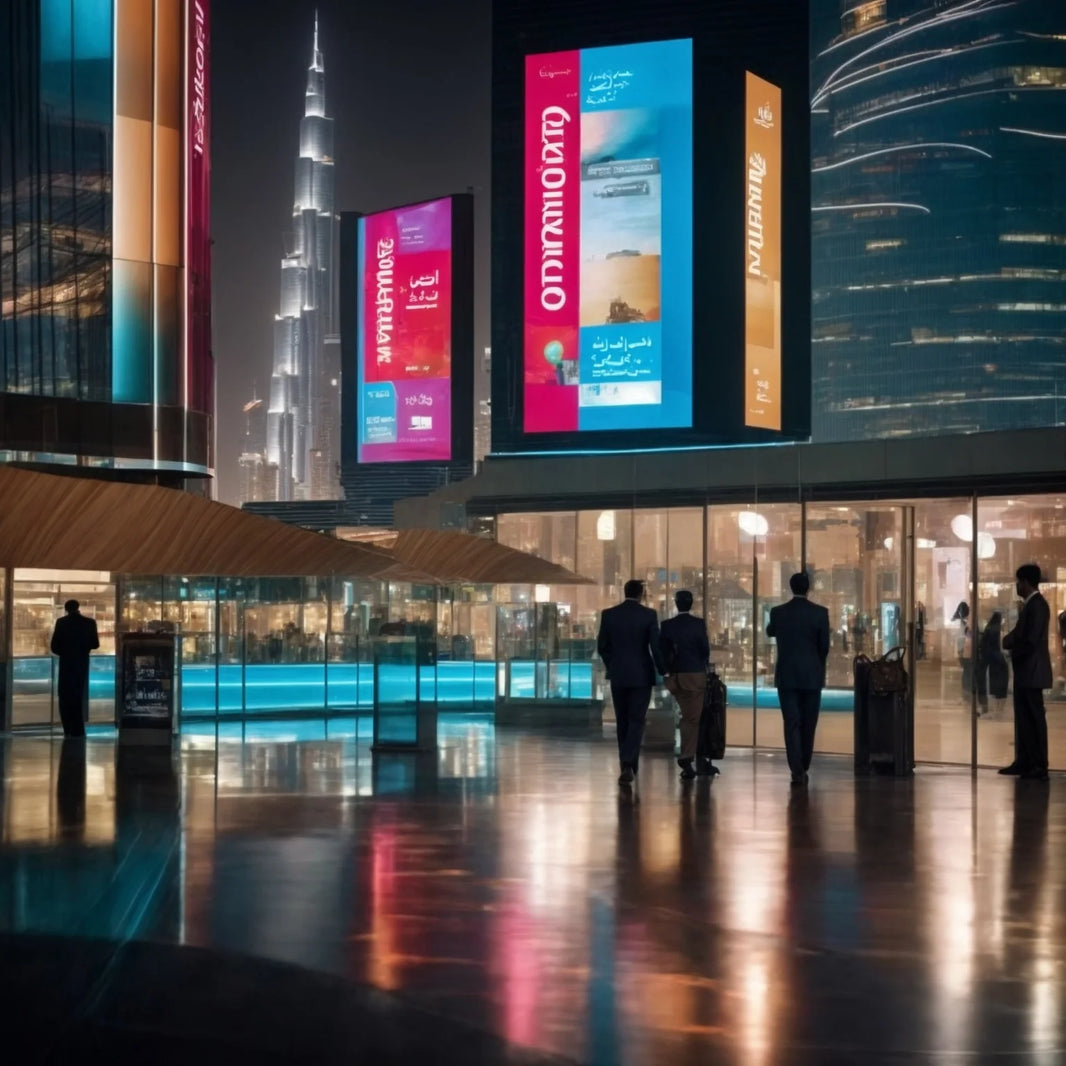The Evolution of Signage in the UAE: From Traditional to Digital
The United Arab Emirates (UAE), a nation that has risen from the desert sands to become a global beacon of commerce, tourism, and technological advancement, has witnessed a remarkable transformation in its signage landscape. This evolution, a reflection of the country's own dynamic progress, has taken signage from its humble beginnings as simple, static displays to the sophisticated, interactive digital platforms that dominate the urban environment today. This article delves into the fascinating journey of signage in the UAE, exploring the key trends, technologies, and cultural shifts that have shaped its evolution.
From Hand-Painted Signs to Neon Glows: The Early Days (1970s-1980s)
In the early days of the UAE, the landscape was punctuated by traditional signage, often reflecting the country's rich cultural heritage. Hand-painted signs, meticulously crafted with vibrant colors and intricate Arabic calligraphy, adorned shop fronts, cafes, and marketplaces. These signs served a simple purpose: to communicate the name and nature of the establishment to passersby. However, these signs were more than mere information carriers; they were works of art that reflected the local culture and craftsmanship. Alongside these hand-painted signs, the glow of neon lights began to illuminate the urban centers, marking a transition towards a more modern aesthetic. These vibrant, electric signs, often displaying the names of businesses or landmarks in bold, eye-catching fonts, symbolized the country's burgeoning modernity and its growing aspirations.
The Rise of Billboards: A Visual Symphony of Advertisements (1990s-2000s)
As the UAE's cities expanded and its economy boomed, the demand for more impactful signage solutions increased. This marked the era of billboards, large-scale displays that became synonymous with the urban landscape. Billboards evolved from simple, static structures to complex, digitally printed masterpieces. These towering displays, strategically positioned along major highways and thoroughfares, became platforms for advertising, promoting businesses, and announcing events. With the advent of digital printing technology, billboards embraced the full spectrum of colors, intricate designs, and high-resolution images, transforming into captivating visual narratives that captured the attention of motorists and pedestrians alike. This era also witnessed the emergence of specialized signage companies, offering a wider range of solutions, including custom-designed billboards, illuminated signs, and large-format displays, further enriching the visual tapestry of the UAE.
The Digital Revolution: Redefining Signage with Interactivity (2000s-Present)
The arrival of the digital age marked a profound shift in the evolution of signage in the UAE. Digital signage, with its ability to showcase dynamic content, interactive features, and high-resolution images, rapidly gained traction, becoming a transformative force in the visual landscape. This shift was fueled by the burgeoning internet, the increasing demand for personalized and engaging experiences, and the desire for greater control over signage content. Early digital signage deployments were often concentrated in high-end shopping malls and airports, but their impact quickly spread to other sectors, including retail, hospitality, healthcare, and transportation.
- Dynamic Content: Digital displays broke free from the limitations of static signs, embracing the dynamism of video, animation, and scrolling text. This allowed businesses to communicate information in a visually engaging and informative way, capturing the attention of even the most casual observer. A digital billboard could showcase a product demonstration, a scrolling news feed, or a time-sensitive promotion, making it a dynamic tool for information dissemination and marketing.
- Real-time Updates: Digital signage empowered businesses to update their content instantly, ensuring that the information displayed was always relevant and current. This capability proved particularly valuable in sectors like retail, where product promotions and pricing fluctuate frequently. Retailers could easily adapt their digital displays to showcase new arrivals, seasonal sales, or special offers, staying ahead of the competition and presenting customers with the most relevant information. The agility of digital signage became a key competitive advantage in the ever-changing marketplace.
- Targeted Messaging: The advent of digital signage platforms brought with it the ability to target specific audiences with tailored messaging. This personalized approach involved leveraging location, time of day, and demographic data to deliver content that resonated with specific groups of viewers. A digital display in a shopping mall could showcase children's clothing advertisements during peak family hours or highlight promotions for luxury goods during evening hours. This personalized approach ensured that the right message reached the right audience, maximizing the impact of signage and enhancing its effectiveness.
- Interactive Experiences: Digital signage took a giant leap forward with the introduction of interactive features, allowing customers to engage with content through touchscreens, sensors, and other technologies. This interactivity revolutionized the customer experience, providing a platform for information access, entertainment, and engagement. Imagine a museum exhibit that allows visitors to interact with digital displays to learn about artifacts, or a retail store where customers can explore product details and compare options using touchscreens. This interactivity created a more engaging and memorable experience, leaving a lasting impression on customers.
- Energy Efficiency: Digital signage aligned with the UAE's commitment to environmental sustainability by embracing energy-efficient technologies. LED displays, for example, consumed significantly less energy than traditional fluorescent lights, making them a more eco-conscious option. This shift towards energy-efficient technologies not only reduced the environmental impact but also contributed to cost savings for businesses. The adoption of energy-efficient digital signage further solidified the UAE's reputation as a leader in sustainable development and its commitment to reducing its carbon footprint.
From Basic Displays to Sophisticated Platforms: The Evolution of Digital Signage
The digital signage landscape in the UAE has continued to evolve, driven by a relentless pursuit of innovation and a focus on enhancing the user experience. Early digital signage displays were often limited in their capabilities, primarily showcasing static images and text. However, advancements in technology fueled the development of more sophisticated displays, offering a wider range of features and capabilities. Today's digital signage platforms are characterized by:
- High-Definition Displays: Modern digital signage displays boast high resolutions and vivid color reproduction, creating stunning visuals that captivate audiences. These displays are capable of showcasing high-quality images, videos, and animations, enhancing the overall impact and visual appeal of signage. This shift towards high-definition displays transformed digital signage from a mere information source to a captivating visual experience, immersing viewers in a world of vibrant colors and intricate detail.
- Content Management Systems (CMS): Content Management Systems (CMS) platforms have revolutionized the way businesses create and manage digital signage content. These platforms allow users to create dynamic content, schedule displays, and track performance metrics with ease. By simplifying the content management process, CMS platforms have made digital signage more accessible to businesses of all sizes, regardless of their technical expertise. This accessibility has democratized digital signage, empowering businesses to leverage its power without needing specialized technical knowledge.
- Integration with Other Technologies: Digital signage platforms are increasingly being integrated with other technologies, such as mobile devices, social media, and analytics tools. This integration enables businesses to create more personalized and interactive experiences for their customers. Imagine a digital display in a retail store that can connect with a customer's smartphone, offering personalized recommendations based on their browsing history and preferences. This level of integration creates a seamless and personalized experience, blurring the lines between the physical and digital worlds.
The Future of Signage in the UAE: Embracing Innovation and Sustainability
The evolution of signage in the UAE is a testament to the country's commitment to innovation and its embrace of technological advancements. The future of signage is likely to be shaped by a confluence of emerging technologies and a growing focus on sustainability. Here are some key trends that are poised to transform the signage landscape:
- Artificial Intelligence (AI): AI is rapidly emerging as a transformative force in the digital signage industry, empowering more personalized and interactive experiences. AI-powered signage can analyze customer behavior, preferences, and demographics to deliver tailored content and recommendations. Imagine a digital display in a retail store that can recognize your age, gender, and shopping habits and then display relevant products and promotions. This level of personalization, enabled by AI, creates a more engaging and relevant experience for customers, ensuring that the right information is presented at the right time.
- Augmented Reality (AR) and Virtual Reality (VR): AR and VR technologies are opening up a whole new world of possibilities for interactive signage. AR can overlay digital information onto the real world, enhancing the customer experience. For example, a retail store could use AR to allow customers to virtually try on clothes or visualize furniture in their homes. VR, on the other hand, can create immersive experiences that transport customers to new environments. This could include interactive museum exhibits, virtual tours of tourist destinations, or even virtual product demonstrations. AR and VR technologies are rapidly evolving, promising to revolutionize the way we interact with signage, creating more immersive and engaging experiences.
- Internet of Things (IoT): The integration of IoT devices into signage networks can enable real-time data collection and analysis, providing valuable insights into customer behavior and preferences. This data can be used to optimize signage content and improve the overall customer experience. Imagine a network of digital displays that can monitor foot traffic, identify popular products, and adjust signage content based on real-time data. This level of data-driven decision-making can help businesses maximize the impact of their signage and create more effective customer experiences.
- Sustainability: As sustainability becomes increasingly important, the signage industry is focusing on developing eco-friendly solutions. This includes using recycled materials, reducing energy consumption, and promoting responsible disposal practices. Many signage companies are now offering sustainable signage options, such as energy-efficient LED displays, recyclable materials, and eco-friendly printing processes. These initiatives align with the UAE's commitment to sustainable development and its efforts to reduce its environmental footprint, ensuring that the signage industry contributes to a greener future.
The evolution of signage in the UAE is a testament to the country's rapid development and its embrace of technology. From traditional, static displays to dynamic, digital platforms, signage has become an integral part of the nation's visual identity, connecting businesses with customers, enhancing the urban landscape, and contributing to the UAE's status as a global leader in innovation. As technology continues to advance, we can expect to see even more innovative and engaging signage solutions emerge in the UAE, shaping the country's visual landscape for years to come. The UAE's journey with signage is an inspiring story of how a nation's visual landscape can evolve alongside its social, economic, and technological progress, reflecting its ambitions and aspirations for the future.

